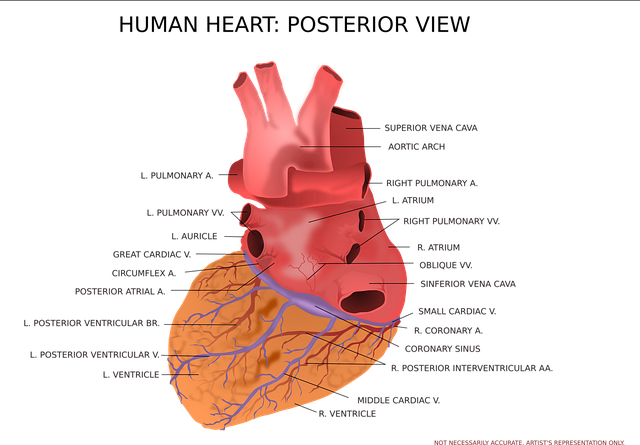Spinal cord MRI technology advancements, including improved gradient coils and data acquisition protocols, offer higher resolution, speed, and contrast, aiding in early detection of nervous system changes. Functional imaging allows real-time visualization of neural activity, enhancing understanding of conditions like multiple sclerosis and chronic pain. Non-invasive techniques prioritize safety and accessibility, opening new opportunities in research and clinical care. AI and Big Data analytics promise precise diagnoses, individualized treatment plans, and prediction of disease progression, revolutionizing spinal cord MRI as a dynamic tool for global neuroscientists.
The future of nervous system imaging promises groundbreaking advancements, revolutionizing neuroscience and medical practices. This article explores four key areas driving this transformation: advanced spinal cord MRI technology enhancing speed and resolution, functional nervous system imaging techniques unlocking brain mysteries, non-invasive methods prioritizing safety and accessibility, and AI/Big Data integration accelerating research. By 2030, these innovations could lead to improved diagnostics, personalized treatments, and a deeper understanding of our most complex organ—the brain.
Advancements in Spinal Cord MRI Technology: Enhancing Resolution and Speed
Advancements in spinal cord MRI technology are revolutionizing nervous system imaging, offering enhanced resolution and speed. Researchers are developing novel techniques to improve contrast resolution, allowing for more detailed visualization of spinal structures. These innovations enable the detection of subtle changes in spinal cord morphology, which is crucial for early diagnosis and monitoring of conditions like multiple sclerosis or traumatic injuries.
The latest advancements include sophisticated gradient coils and improved data acquisition protocols, enabling faster scanning times without compromising image quality. This acceleration is significant, as it facilitates real-time monitoring of dynamic processes within the spinal cord. Such progress paves the way for more efficient clinical assessments and opens doors to exploring the complex interactions between the spinal cord and peripheral nerves.
Functional Nervous System Imaging: Unlocking the Brain's Secrets
Functional nervous system imaging techniques, such as spinal cord MRI, are revolutionizing our understanding of the brain and its intricate functions. By allowing researchers to visualize neural activity in real-time, these advanced technologies provide a window into the complex dynamics of the central nervous system. This capability is unlocking profound secrets about how we think, feel, and move, enabling scientists to unravel the mysteries of neurological disorders and cognitive processes.
Spinal cord MRI, in particular, has emerged as a powerful tool for studying the spinal cord’s role in motor control, sensory perception, and communication with the brain. By tracking blood flow changes and metabolic activity, researchers can now observe the spine’s response to various stimuli, offering insights into conditions like multiple sclerosis, spinal cord injuries, and even chronic pain. This level of insight paves the way for more precise diagnoses and targeted interventions, ultimately enhancing our ability to treat and manage nervous system disorders.
Non-Invasive Techniques: Safety and Accessibility in Focus
Non-invasive techniques are at the forefront of nervous system imaging, with a growing focus on safety and accessibility. Advances in technology have led to the development of sophisticated tools that can visualize the intricate structures of the brain and spinal cord without the need for invasive procedures. One prominent example is the enhanced spinal cord MRI, which offers a safer alternative to traditional methods. This technique employs specialized sequences and advanced scanning protocols to acquire detailed images of the spinal cord, enabling researchers and clinicians to study its anatomy and pathology more effectively.
By prioritizing non-invasiveness, these innovations broaden access to nervous system imaging, particularly for vulnerable populations or individuals with specific conditions that may contraindicate invasive procedures. Moreover, non-invasive techniques have the potential to revolutionize clinical practice by providing repeated and long-term imaging without the risks associated with surgery. This shift towards safer and more accessible methods promises to enhance our understanding of neurological disorders and improve patient care.
Integrating AI and Big Data: Revolutionizing Nervous System Research
The integration of Artificial Intelligence (AI) and Big Data is poised to revolutionize nervous system research, particularly in advancing spinal cord MRI techniques. By leveraging AI algorithms, researchers can analyze vast datasets generated from advanced imaging scans, uncovering intricate patterns and correlations within the complex neural networks of the spinal cord. This transformative approach enables more accurate diagnoses and personalized treatment plans for conditions affecting the spine and nerves, such as injuries or degenerative diseases.
Big Data analytics, combined with AI, can also predict disease progression and identify novel therapeutic targets. These innovations have the potential to accelerate research, improve patient outcomes, and open new avenues for exploring the intricacies of the nervous system. With continuous advancements in computing power and data collection methods, the future looks bright for transforming spinal cord MRI into a more dynamic and insightful tool for neuroscientists worldwide.
The future of nervous system imaging looks bright, with continuous advancements driving breakthroughs in understanding and treating neurological conditions. From enhanced spinal cord MRI technologies offering higher resolution and faster scanning, to non-invasive techniques prioritizing safety and accessibility, functional nervous system imaging is unlocking new insights into brain function. Integrating AI and big data promises to revolutionize research, enabling more accurate diagnoses and personalized treatments. As these innovations mature, they will undoubtedly transform the landscape of neurological care.
